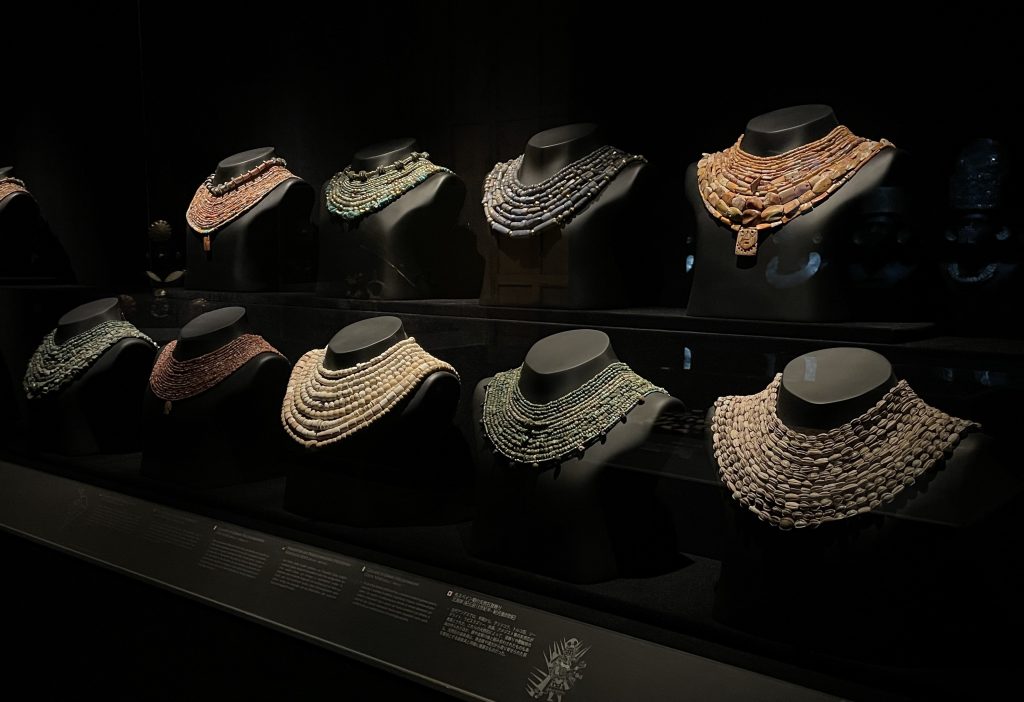Pre-Columbian Gemstone Necklaces
Room 12, Vitrine 146
Shell, stone, metal
Peruvian Northern Coast
1250 BC – 800 AD
- Necklaces and bracelets that were worn by members of the elite in ancient Peru, made with gems and stones such as chrysocolla, turquoise, sodalite, quartz and amethyst, as well as Spondylus shells and other organic materials, in some cases combined with gold or copper beads.
- Throughout history, humans have adorned their bodies to differentiate themselves, and also as a way of expressing their membership of a collective, or to communicate social status.
- In ancient Peru, semi-precious stones –with their hard surfaces, bright colors and subterranean origin in mines and mountains- represented the different powers of the earth and their transcendence. Materials such as Spondylus shell, or mullu, considered a sacred being and gathered from the depths of the ocean, were associated with the world of the ancestors and the power of water. The careful selection of these raw materials, as well as the form, size and designs of these decorative objects, fulfilled a social and symbolic function, reinforcing and legitimizing the power and role of rulers, priests and priestesses.
- The manufacturing process of these beads involved the selection of the material, preparation, cutting, carving, perforating and polishing, among other specialized tasks. At each manufacturing stage, different types and sizes of stone and bone tools were required.
- The groups of necklaces displayed here were not found with this distribution or originally grouped in this way. These are recreations made from Pre-Hispanic beads found at archaeological sites in northern Peru, inspired by examples left to us in the form of Pre-Columbian iconography and art, as seen in the design that accompanies this text, so that we can appreciate the forms and ways in which they would have been used in the past.
